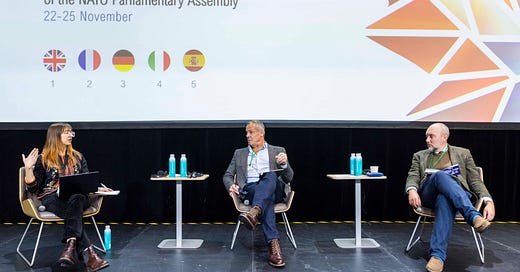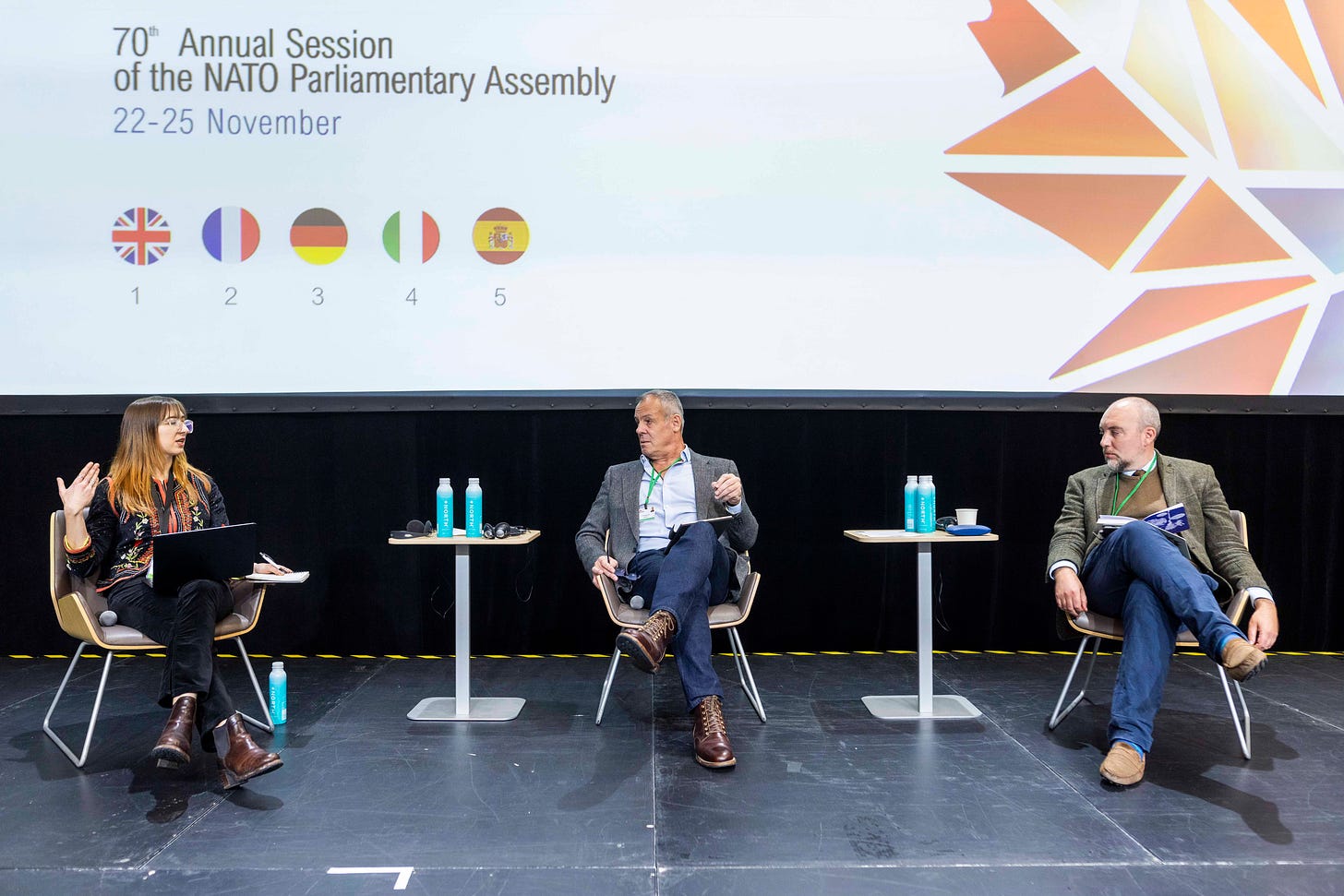On November 23, 2024, I had the pleasure to moderate a panel discussion at the 2024 Annual NATO Parliamentary Assembly in Montreal. Because of the size of the panel (only two speakers), I took the liberty to offer some framing remarks.
Because this is my stackie and I do what I want (I know, I am very mature), I thought I would share it here.
A close to 2024, of sorts.
Let me take the opportunity to thank all of you who’ve taken the time to read this over the past year – it’s been quite the active platform! But now as I am working on my PhD and continuing my work at CGAI, expect this to be less active than before. I will try to find a rhythm, but every other aspects of my life will have to take precedence.
On that small note, happy new year. Hopefully 2025 will bring us more peace and more stability. Given how high of a bar that is, I wish that you have as much access to your favourite treats and people as you want. How’s that for a reasonable wish?
Cheers!
We are meeting 1,004 days after Russia’s full-scale invasion of Ukraine, sitting in the comfort of reflecting on the directions of our armed forces. How lucky are we to be in such a position. The scale of this luxury, of course, depends on where in the Alliance we find ourselves – Canada has always been quite privileged in this sense.
While we should observe with interest the lessons the Ukraine Armed Forces and its personnel are learning on the battlefield, we should be careful not to assume that they are experiencing the future, and we are stuck in the past. Language, culture, geography, and demography, military structures and assets – or lack thereof – cannot always be generalized and echoed on different battlefields.
In parallel, militaries across the Alliance are undergoing profound modernisation while grappling with serious personnel shortages. Is it because young millennials and Gen Z are no longer patriotic? Last fiscal year, over 70,000 people applied to join the Canadian military – almost double the previous years. Only 4,500 made it. We could run to the conclusion that this is a problem of standard., but the number is in line with the Canadian military’s average intake. This average intake has not been able to keep pace with attrition for decades.
Could artificial intelligence or automation help us overcome that challenge?
These technologies could certainly help make certain processes go faster and become more efficient, and therefore allowing personnel to focus on more essential tasks. But we cannot expect them to replace humans.
What are we to do?
The solution resides in two central – yet simple – ideas.
First, it is the very obvious concept that modernization cannot mean business as usual with fancy technology or bespoke equipment. Deep organizational transformation needs to occur in order to leverage the strategic, operational, and tactical advantages technology can offer – both in headquarters and in the field.
Second, and it is an inherent, yet underrated, part of modernization, is asking ourselves whether or not our militaries are institutions in which our people want to serve. While the war in Ukraine has proven that the quality of people matters, warfare remains a number’s game.
Our militaries ought to adapt to a new reality, and to an evolving society. Are our standards still meeting our needs? Are we effectively supporting our service members? Could we leverage a new way of employing our Reserves?
We need to accept that operational effectiveness and mission success do not necessarily stand in contradiction to civilian values. Our militaries need to modernize and go through a paradigm shift if they want to overcome their personnel shortages. Doing so could increase morale and cohesion, both within the ranks of our armed forces and between our militaries and our societies.
It is a deep reflection militaries should pursue – Ukrainians did not have much of a choice, as their country and democracy were on the line. Currently, our goal is deterrence. It is an elusive goal. How do we encourage our people to serve? There, we need military and civilian leadership to come together.
At the core of the discussion is this: as our nations have agreed to spend at least 2 per cent of GDP on defence spending, what are we investing towards? And what for? Let’s make sure the investments we make are the best ones possible, and deliver on the promise of an Alliance that offers a strong, credible deterrent and is able to effectively counter threats.
Thank you.





Any organization that has 70,000 applicants and can only get 4,500 only needs to look in the mirror to see where the problem is.
Charlotte as always you provide great framing to the essential debates. Well done!!